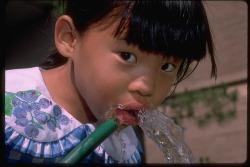Resources about Drinking Water in Child Care Settings for Government Agencies

Young children are at particular risk for exposure to contaminants in drinking water because, pound for pound, they drink more water than adults (including water used to prepare formula), and because their immature body systems are less efficient at detoxification. Exposure to lead in drinking water is a serious health concern, especially for young children and infants since elevated lead levels in children may result in delays in physical or mental development, lower IQ , and even brain damage.
To assist child care centers with implementation of programs and policies to reduce exposure to contaminants, such as lead in drinking water, EPA uses the 3Ts concept: Training, Testing, Telling. The tools in this section provide information on the steps that can be taken to reduce such exposures.
Resources
- Drinking Water Practices for Schools and Child Care Facilities Served by Municipal Water Systems
